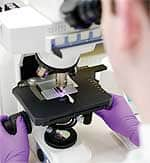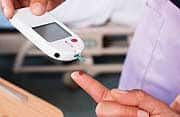Life Extension Magazine®
The explosive scientific interest in the broad-spectrum benefits of vitamin D are largely due to the lifelong research of one man, Dr. Michael F. Holick. As the world’s leading vitamin D researcher, Dr. Holick has pioneered and inspired significant studies that have investigated how receptors located throughout the body can employ vitamin D to reduce the risk of cancer, heart disease, diabetes, and depression. In this exclusive interview with Life Extension Magazine®, Dr. Holick discusses the impact of his work and his future projects. LE: Dr. Holick, when Life Extension Magazine first interviewed you back in 2003, very few people were interested in the subject of vitamin D. MH: I remember very well. LE: Most doctors and most people knew that they received vitamin D in their milk and that it was good for bones, end of story. No one had any idea as to the wealth of health benefits that vitamin D can deliver. You had a long fight to make your work heard. People thought vitamin D was boring. MH: I felt like a Maytag® repairman every time I got up to talk to doctors about vitamin D. Everyone was aware of the need of vitamin D for childhood bone health and it was assumed that adults were able to get enough vitamin D from a balanced healthy diet. So, why should we care about vitamin D? LE: Seven years later, vitamin D is now the topic of discussion throughout the medical world. Doctors, who think that supplementation is a waste of time, are now recommending vitamin D to their patients. What happened to change the conversation? MH: I think what happened was a few people started to actually listen and initiated studies to look at disease incidence, as it related to both sun exposure and vitamin D status. And all of a sudden, they were amazed to find compelling associations. In the past two years, we now have mechanisms by which we can understand why vitamin D has so many important biologic roles to play and why it’s so important to be vitamin D sufficient to maintain maximum health. LE: In your new book The Vitamin D Solution, one of the most fascinating chapters is the discussion on vitamin D and the prevention of breast, prostate, and colon cancer. A few years ago no one would have imagined that vitamin D could play such an important role in the prevention of cancer. Do the studies show that vitamin D’s role is just in prevention or are there possible treatment modalities?
MH: We are currently investigating these possibilities. What concerns me is that people may now think, “Aha, I won’t need to take my chemotherapy, I can just take more vitamin D.” I would never recommend that. But we do have evidence from our mouse studies that a patient may respond better to chemotherapy, have less tumor growth and have less metastatic activity, if you increase your vitamin D intake and get your blood levels in the range that I recommend in The Vitamin D Solution, which is to maintain a blood level of 25-hydroxyvitamin D of between 40-60 ng/mL. LE: Based on these studies, it would seem that every oncologist should be testing their patients for 25-hydroxyvitamin D levels and putting them on a regimen for optimal levels, in order to potentially improve their response to chemotherapy. MH: Cancer patients are at high risk for vitamin D deficiency. These patients usually can’t go out in the sun, because the chemotherapeutic agents cause a photosensitivity reaction. Also, they often have nausea, so that they don’t eat a well balanced diet that includes foods containing vitamin D such as dairy products, vitamin D fortified orange juice, salmon and mushrooms. They may also have malabsorption of a whole range of nutrients including vitamin D. As a result, vitamin D deficiency in cancer patients not only can affect their bone health but also causes them to have a feeling of being depressed, having muscle weakness, and aches and pains in their bones and muscles. A lot of these symptoms that have been thought to be due to the cancer and the chemotherapy—many of them may be due to vitamin D deficiency. Patients that I have treated feel better after treating their vitamin D deficiency. So separate from its potential benefits of improving responsiveness to chemotherapeutic agents, patients feel better and they’re more active. LE: Is this valuable information about the benefits of vitamin D to cancer patients getting into the hands of oncologists? MH: No, I don’t believe so. Interestingly, cardiologists have begun to realize the importance of vitamin D for cardiovascular health but the oncologists have not appreciated the non-skeletal benefits of vitamin D for their cancer patients. It is important for cancer patients to receive the appropriate cancer therapy. They should also increase their vitamin D intake to take advantage of all of the health benefits that vitamin D can provide including improvement in feeling of well-being. LE: Given the obesity epidemic that is now spreading throughout the world, what is the relationship between vitamin D deficiency and obesity?
MH: That’s a good question. People who are obese have so much body fat that the vitamin D gets sequestered in it, and so it no longer becomes bioavailable. We did a study that showed obese adults exposed to simulated sunlight or given an oral dose of vitamin D only raised their blood level to about 45% of what a person with normal weight could. Thus obese people need at least two to three times more vitamin D to satisfy the requirement. Vitamin D deficiency causes muscle weakness, aches and pains in bones and muscles, and so it makes them want to be more of a couch potato. As a result, they are more likely to be less active. Therefore, if they’re eating the same number of calories, they will exacerbate their obesity. We know that fat cells have a vitamin D receptor, as I point out in The Vitamin D Solution, and that the active form of vitamin D seems to play a role in fat cell metabolism and in insulin sensitivity, all of which are very important for helping to reduce the risk of obesity and type 2 diabetes. LE: Speaking of insulin sensitivity, what is the relationship of vitamin D and diabetes? MH: The most serious form of diabetes is type 1. We believe that if children have adequate vitamin D on board, they are less likely to develop viral and bacterial infections, and there is evidence to suggest that type 1 diabetes may be caused by an initial viral infection, followed by an autoimmune response causing the destruction of the insulin producing cells in the pancreas. In The Vitamin D Solution, I discussed a study conducted in Finland where children in the 1960s who received 2,000 IU of vitamin D a day during the first year of life and followed for 31 years reduced their risk of developing type 1 diabetes by 88%. In terms of type 2 diabetes, the beta islet cell that makes insulin has a vitamin D receptor. Active vitamin D stimulates insulin production. There is evidence that vitamin D may be directly acting on fat cells to improve insulin sensitivity. Therefore, vitamin D plays a role in insulin production, as well as enhancing insulin sensitivity and is a likely explanation for one of the studies I cite in the book that there was a 33% reduced relative risk of developing type 2 diabetes for men and women who had the highest vitamin D intake. LE: Given the broad spectrum importance of vitamin D with regard to cardiac health as well as cancer and diabetes prevention, why are we so deficient? MH: If you’re Mother Nature and you had to guarantee that your inhabitants needed to get a biochemical nutrient, i.e. vitamin D, to maximize their health, you probably wouldn’t want to depend on a nutrient found in the diet. Since most living creatures on the earth were exposed to sunlight one simple way to guarantee their vitamin D requirement was to be simply exposed to sunlight and to make vitamin D in the skin. Our hunter-gatherer forefathers were outside every day and most likely were making thousands of IUs of vitamin D a day. As a result, our bodies adapted to that amount of vitamin D to maximize health. However, now we have limited our sun exposure and have been encouraged to always wear sun protection. In my opinion, this is one of the major causes for the vitamin D deficiency pandemic. In India and Thailand, vitamin D deficiency is common. Even in Saudi Arabia, Qatar and South Africa, more than 50% of the population is deficient in vitamin D, all because of their avoidance of sun. Studies have shown that 40% of Floridians were vitamin D deficient. It’s often recommended that in the summer you should go out in early morning or late afternoon to minimize skin damage and to get your vitamin D. However it turns out you make no vitamin D during this period. Your body produces vitamin D between the hours of 10 AM and 3 PM even in Florida. As I mention in the book, if you’re in a bathing suit and are exposed to sunlight and 24 hours later have a light pinkness to your skin, it’s equivalent to ingesting about 20,000 IUs of vitamin D. So if you think about that, it’s pretty clear our hunter-gatherer forefathers were making thousands of IUs a day, and now with little sun exposure the only sources of vitamin D are from natural sources including salmon and mushroom and fortified foods such as some dairy products and orange juices which contain 100 IU of vitamin D per serving. Even a multivitamin only contains 400 IU of vitamin D. For every 100 IU of vitamin D ingested an adult raises their blood level of 25-hydroxyvitamin D (the measure for vitamin D status) by 1 ng/mL. Thus drinking a glass of vitamin D fortified milk or taking a multivitamin will only raise your blood level of 25-hydroxyvitamin D by 1 and 4 ng/mL respectively. I think we’ve been off by a factor of 5 to 10 for the amount of vitamin D that everybody needs. Children need at least 400 IU and up to 1,000 IU daily is preferred. Teenagers and all adults need at least 1,500-2,000 IU of vitamin D daily. LE: What are the misperceptions about vitamin D supplementation in terms of toxicity? MH: I talk about this a lot when I give talks to physicians. I joke about this by saying to them that the one thing doctors remember from medical school more than anything else is…don’t ever make your patient vitamin D intoxicated. However, they’ve never seen vitamin D intoxication and they don’t even know what it is. Yet, despite all of the new information about vitamin D, they still believe that taking 50,000 IU of vitamin D once a week for eight weeks to treat vitamin D deficiency is going to cause vitamin D intoxication. We did a study with Dr. Heaney in 2002 and showed that you can take up to 10,000 IU of vitamin D a day for almost a half a year and not worry about vitamin D intoxication. In The Vitamin D Solution, I suggest that for children during the first year of life, up to 2,000 IU of vitamin D a day is safe. Children from age 1 to 12 years 5,000 IU of vitamin D a day is safe. All teenagers and adults can easily tolerate 10,000 IU of vitamin D a day without concern for toxicity. LE: There is a great deal of discussion regarding optimal vitamin D levels. What should we strive for? MH: I think you need to maintain your 25-hydroxyvitamin D level above 30 ng/mL. For my patients and for me personally, I like for it to be between 40-60 ng/mL of 25-hydroxyvitamin D to guarantee vitamin D sufficiency and its health benefits. LE: From an objective point of view, this doesn’t seem to be so hard to accomplish. You get some moderate sun exposure, you take your supplements; yet we have a massive population that is vitamin D deficient. What’s going on? MH: I discuss in The Vitamin D Solution that it is essentially impossible to get an adequate amount of vitamin D from dietary sources on a daily basis. It is also difficult to convince all children, especially teenagers, and all adults to take a vitamin D supplement every day. We have always depended in the past on sensible sun exposure as the major source of vitamin D which we have now abandoned.
Vitamin D can be taken with or without food and can be taken daily, weekly or even monthly as long as the total dose is equivalent. For example, teenagers and adults need a total of at least 2,000 IU of vitamin D a day. Taking 14,000 IU of vitamin D weekly or 50,000 IU of vitamin D every two weeks has been shown to be effective in maintaining the blood levels of 25-hydroxyvitamin D above 30 ng/mL in teenagers and adults. LE: In order to establish one’s need of this critical vitamin, people need to be tested. It would seem that physicians should include vitamin D testing with the standard CBC testing for cholesterol and other markers. MH: It’s not unreasonable, but the problem is that it’s expensive. It can cost up to $225 for an assay and Medicare reimburses only forty dollars. My recommendations—there’s an editorial coming out in the journal Clinical Chemistry by me for them—is that not everybody should be screened but everybody should be getting a vitamin D supplement. If you take a vitamin D supplement as I have recommended along with sensible sun exposure in the spring, summer, and fall, you should be able to maintain your blood level of 25-hydroxyvitamin D above 30 ng/mL. I personally take 2,000 IU vitamin D supplement along with a multivitamin containing 400 IU of vitamin D and drink three glasses of vitamin D fortified milk daily and my blood level of 25-hydroxyvitamin D is in the range of 40-50 ng/mL. However if you have an intestinal malabsorption syndrome, you’re obese, you’re on glucocorticoids such as prednisone, antiseizure or AIDS medications, or have sarcoidosis, these patients need to be carefully followed and monitored. (Editor’s note: Life Extension members pay only $47 for vitamin D (25-hydroxyvitamin D) blood testing as opposed to the up to $225 cost Dr. Holick has observed.) LE: Is there any data on the impact of aging on vitamin D absorption and levels? MH: Twenty years ago, we published a study that stated that aging does not affect your ability to absorb vitamin D from diet or supplements. Others have now reproduced those findings. However, aging does markedly decrease your ability to make vitamin D in your skin. When you compare a seventy-year old to a twenty-year old, the seventy-year old only makes about 25 % of the vitamin D compared to the 20-year-old. I usually recommend for older people over the age of about 70 years to expose more of their skin—abdomen, back, legs, arms while always protecting their face.
LE: Given the recent studies that point out that anti-depressants are only about 50% effective, what role does vitamin D play in mood modulation? MH: We know that vitamin D receptors exist in the brain, and there is evidence that in utero--as the infant is developing—if the mother is vitamin D deficient, the child has a much higher risk of developing schizophrenia later in life. There are animal studies that have shown that vitamin D will increase serotonin levels in the brain. Therefore it is thought that if you have a healthy vitamin D status (25-hydroxyvitamin D 30-100 ng/mL), it will do the same thing for people: improve their serotonin levels and improve their mood and feeling of well-being. LE: Can you tell us about some of your current research projects? MH: Right now we are estimating that there may be up to 2,000 genes in the body regulated by vitamin D, which is probably why it plays such an important role for your health. We’re now on the hunt for these genes to better understand how much vitamin D a person needs to maximize their gene activity for improving and maintaining good health. LE: In a perfect world, where people are getting optimal levels of vitamin D, do you see a drop in the major killers such as cancer, heart disease, and diabetes? MH: Absolutely. Based on some of the literature, it seems that we could probably decrease health care costs across the board by 25% if everybody had optimal vitamin D status. LE: That’s very, very significant. We are grateful for your innovative work with vitamin D and the life-saving changes it is bringing to all of us. Michael F. Holick, PhD, MD, is a professor of medicine, physiology, and biophysics at Boston University Medical Center. He is also the director of the General Clinical Research Unit, the Bone Health Clinic, and the Heliotherapy Light and Skin Research Center at BUMC. Dr. Holick speaks worldwide about the benefits of vitamin D and has been featured in The New York Times, Forbes, Time Magazine, Newsweek, Men’s Health, and Scientific American. |





